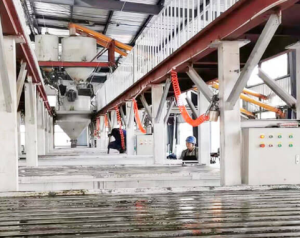Navigating the technical world of construction materials, professionals in the field often come across various abbreviations and symbols, each representing a specific characteristic, classification, or standard. In the realm of concrete technology, "CL" emerges as a notable abbreviation, carrying particular significance regarding the composition and performance of concrete. It pertains to the term "Cement-Lime," highlighting a crucial aspect of the mixture known for influencing factors like workability, durability, and especially the concrete's early strength.
Deciphering Cement-Lime (CL) in Concrete
The "CL" symbol is a nod to the traditional and highly effective practice of adding lime to cement. Lime, a product derived from limestone, has been part of building practices for centuries, known for its ability to enhance the plasticity and cohesiveness of mortar and concrete mixes. When lime is incorporated into concrete, it reacts with the water and cement, creating a scenario that allows for longer workability and provides a more water-tight set once the concrete hardens.
Cement-lime concrete presents several advantages in construction. The enhanced workability ensures ease of application, making it suitable for intricate architectural designs that require a superior finish. Furthermore, the increased plasticity reduces the likelihood of cracks developing as the concrete sets, ensuring long-term durability and structural integrity.
Role in Enhancing Concrete Early Strength
The aspect of concrete's early strength is a critical concern in construction projects, dictating the pace at which the subsequent stages of construction can proceed. The use of a concrete early strength enhancer, which may be included in Cement-Lime mixes, ensures that the concrete reaches its required strength quickly. This rapid strength development is crucial for load-bearing structures and is especially beneficial in environments with cold climates where slow curing processes traditionally delay construction.

The early strength of concrete is determined by the rate of hydration, the chemical reaction between cement and water. The lime within the CL mixture contributes to a more efficient hydration process, creating forms of calcium silicate hydrate, a bonding agent that provides concrete with strength and durability. Thus, CL concrete is not just about achieving the right consistency for application; it's equally about ensuring the robustness and longevity of the final structure.
Implications for Modern Construction Practices
Adopting Cement-Lime concrete in construction projects is a strategy that goes beyond historical practices. In modern construction, where timelines are as crucial as the physical integrity of structures, using CL concrete means hitting multiple targets with a single approach. Builders not only benefit from easier handling but also from faster strength gain, reducing downtime between different construction phases.
Moreover, CL's implications for durability contribute to a structure’s resilience against environmental stressors, reducing maintenance costs over the building's lifespan. This resilience is particularly important in the face of climate change, where buildings increasingly need to withstand extreme weather conditions.
In essence, the "CL" in concrete is a small detail with considerable impact. It underscores the industry's reliance on tried-and-tested methodologies, highlighting that even traditional practices have their place in modern construction, particularly when they support the speed, efficiency, and sustainability now required in this field.
